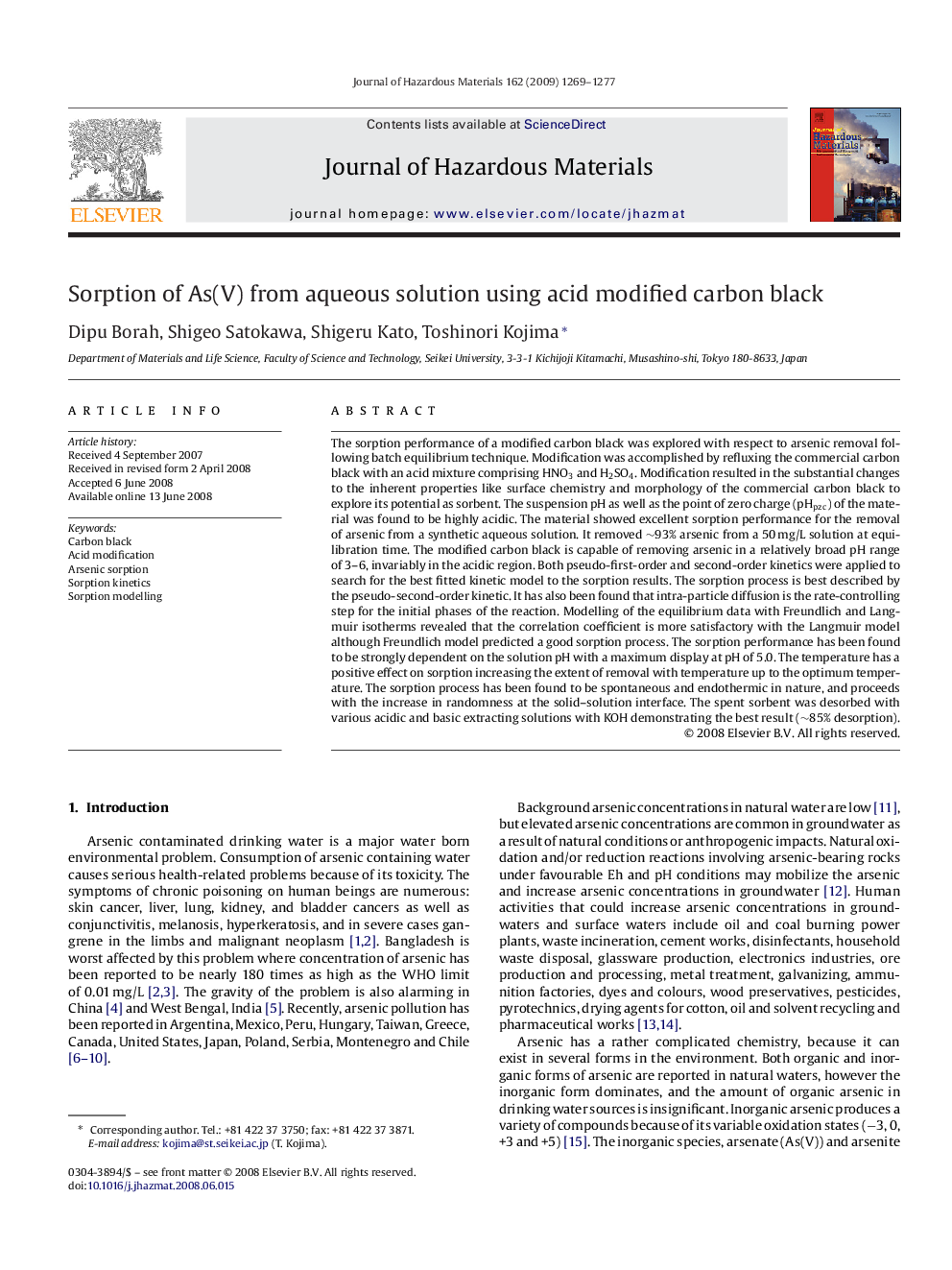| Article ID | Journal | Published Year | Pages | File Type |
|---|---|---|---|---|
| 582433 | Journal of Hazardous Materials | 2009 | 9 Pages |
Abstract
The sorption performance of a modified carbon black was explored with respect to arsenic removal following batch equilibrium technique. Modification was accomplished by refluxing the commercial carbon black with an acid mixture comprising HNO3 and H2SO4. Modification resulted in the substantial changes to the inherent properties like surface chemistry and morphology of the commercial carbon black to explore its potential as sorbent. The suspension pH as well as the point of zero charge (pHpzc) of the material was found to be highly acidic. The material showed excellent sorption performance for the removal of arsenic from a synthetic aqueous solution. It removed â¼93% arsenic from a 50Â mg/L solution at equilibration time. The modified carbon black is capable of removing arsenic in a relatively broad pH range of 3-6, invariably in the acidic region. Both pseudo-first-order and second-order kinetics were applied to search for the best fitted kinetic model to the sorption results. The sorption process is best described by the pseudo-second-order kinetic. It has also been found that intra-particle diffusion is the rate-controlling step for the initial phases of the reaction. Modelling of the equilibrium data with Freundlich and Langmuir isotherms revealed that the correlation coefficient is more satisfactory with the Langmuir model although Freundlich model predicted a good sorption process. The sorption performance has been found to be strongly dependent on the solution pH with a maximum display at pH of 5.0. The temperature has a positive effect on sorption increasing the extent of removal with temperature up to the optimum temperature. The sorption process has been found to be spontaneous and endothermic in nature, and proceeds with the increase in randomness at the solid-solution interface. The spent sorbent was desorbed with various acidic and basic extracting solutions with KOH demonstrating the best result (â¼85% desorption).
Related Topics
Physical Sciences and Engineering
Chemical Engineering
Chemical Health and Safety
Authors
Dipu Borah, Shigeo Satokawa, Shigeru Kato, Toshinori Kojima,
